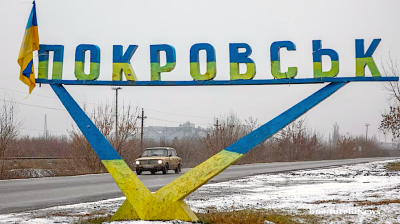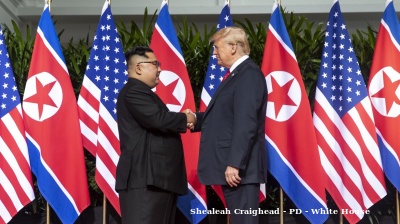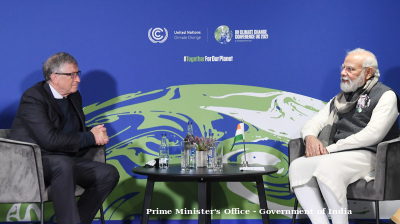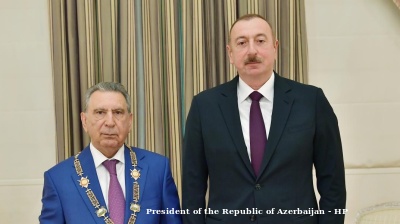The front-end contract for US West Texas Intermediate (WTI) fell to less than zero on April 20 for the first time in history, as market participants ran out of places to store crude.
The contract for May delivery, which expires on April 21, plunged 300% to -$37.63 a barrel as no traders were willing to take delivery of the oil as there is no storage for it. Brent crude oil prices, which have already rolled over to June-delivery contracts, fell 8.9% to settle at $25.57 per barrel. Russia’s Urals blend was trading at $24.55 on the same day.
Not all oil prices have crashed. It is specifically the US WTI blend on the futures market for delivery in May. Brent futures for delivery in June, for example, are still at about $25. However, the prices for future deliveries in the coming months are currently higher than the shorter-term contracts, which is the reverse of the normal pricing. The issue driving up the near-term future contracts is the lack of storage for crude, as the owner of the delivery contract bought on the futures market has to take delivery. It's a storage problem, not a market problem that is driving down the prices to historic lows.
Traders said it is still too early to say what the rout on the futures market for oil will have on June contracts, but with oil prices this low investors are likely to return to the market tomorrow and lift prices from their historic lows, say pundits.
Extremely low prices are unlikely to persist as demand is set to recover modestly in the coming months, but sustained low prices will have a heavy impact on Russia’s budget, which still assumes an average oil price of $42 for this year and could lead to the state using all of the RUB12 trillion ($176bn) in the National Welfare Fund (NWF) this year, instead of spinning it out over the next decade as the Kremlin previously hoped.
Extended low prices will also largely destroy the US shale industry which has lifting costs that are five to ten times higher than those of the OPEC+ cartel.
However, the biggest unknown is the duration of the global lockdown caused by the coronavirus (COVID-19) pandemic which has exacerbated the slump in demand for oil and added to the international glut of crude that has pushed prices down so low.
Frantic trading led to an exodus from the oil market as oil futures collapsed sending contracts into negative territory for the first time in ever, as oil producers were forced to pay traders to take crude off their hands as there is nowhere to store the oil.
Plunging crude prices have already sent shockwaves through international capital markets. While trading in Europe had already ended for the day, markets in the US reacted quickly and started falling, following the price of oil downwards as investors scrambled for the safety of US treasury bills.
Only a week ago the OPEC++ production cut deal that will reduce production of oil by 9.7mn barrels per day (bpd) was agreed on April 13 and was supposed to hold prices up. However, on the day it was announced the deal was pronounced “too little, too late” and after a brief rally in prices they fell back again into the $20s.
Demand crushed
US President Donald Trump boasted that he had brokered a key deal that would “save thousands of American jobs,” but the US was non-committal on if would participate in the deal. But even without a formal commitment to cut production US output could fall by as much as 2mn bpd as shale producers go out of business, according to some experts.
The problems with the global oil glut have been amplified by the coronavirus pandemic that has shut millions of people up in their homes and brought demand for fuel down dramatically. Oil demand has dropped by as much as 30mn bpd, roughly equivalent to the combined output of Saudi Arabia, Russia and the US.
Average daily US oil production this year will fall 500,000 bpd from 12.23mn bpd in 2019, to 11.76mn bpd and sink another 700,000 bpd next year, the Energy Information Administration recently forecast, reports Reuters. Unlike the 2014-2016 oil shock, this time round US banks are already refusing to extend financing to struggling producers.
Russia also committed to shrinking output by 1.8mn bpd from 10.3mn bpd, which is more than the 300,000 bpd it was obliged to cut under the old deal that just expired. Leading Russian privately owned oil company Lukoil announced on April 20 that it would cut production by 18% over the next two months, but analysts said that if all the top oil companies made similar cuts then that would not be enough to meet Russia’s new OPEC++ commitments. Saudi Arabia agreed to cutting by 1.3mn from 9.8mn under the new deal.
Oil prices have already been through some of their largest swings in history in the last three months making managing the market by the OPEC++ cartel agreement extremely difficult.
With oil prices going negative the problem has gone beyond managing production cuts amongst the leading producers. The game changes now and the issue at hand has simply become which wells to shut down entirely.
“Today’s price move feels like oil is passing a kidney stone. A very painful move but it can’t last for long, since producers are switching off wells as we speak,” David Winans, principal US investment grade credit research at PGIM Fixed Income, told Reuters. Winans added that the supply shock of the failure of the OPEC+ talks at the start of March was the beginning but has since been overwhelmed by the demand shock from the coronavirus.
“Ultimately, the path for oil prices is going to follow the path of this virus. Until demand shows some sign of life, oil prices will likely remain on life support,” Winans said.
Even a hypothetical recovery in demand is clearly still several months away. While China is out the other side of the pandemic and starting to reopen factories and schools, most of Europe is at, or close to, peak infection rates now and it will take at least another month before they tentatively start to allow people to go back to work. Other countries like Russia are still in the fast growth phase of the infection’s spread. Moscow mayor Sergey Sobyanin said last week that Moscow was still in the “foothills” and the peak infection rate is still several weeks away.
As bne IntelliNews reported Austria is the first European country that is tentatively easing stay-at-home restrictions and in Germany the R0 infection rate has fallen to 1, which means infection rates should stabilise now. But even after restrictions are lifted it will take several months for life to return to normal and to start lifting demand for oil, which means low prices are likely to persist into the autumn.
Russia to take a heavy hit
Any hopes of a V-shaped recovery must be dashed now and Russia’s self-confidence from the last few weeks that it could cope with the crisis in particular will be undermined.
As bne IntelliNews reported there are three possible scenarios: a V-shaped rapid recovery, an L-shaped Great Depression or a U-shaped slow recovery over several years.
Some analysts were hoping that there were would be a strong bounce back after the pandemic burns itself out in the next few months. Russian Finance Minister Anton Siluanov pointed to the RUB12 trillion in the NWF that can use used to supplement the budget spending and cover any deficits caused by low oil prices.
Until yesterday Siluanov was boasting there is enough in the NWF to last for a decade with oil prices as low as $25, although this week he drastically tempered his comments, saying that half of the NWF may have to be spentin this year alone to stimulate the economy.
That was based on an assumption of $25 oil and a RUB3 trillion hole in the budget. And actually those assumptions still hold as Brent blend is still trading at $25, but the problem for Russia is the price of its Urals blend has already tumbled after the Saudis flooded the European refineries with crude to punish Russia.
Usually the Urals blend trades with a roughly $2 discount to Brent, but in the last weeks Urals blend prices have already turned negative as Russian producers have already experienced exactly the same problem that US traders were facing today. Urals blend has recovered from that low and was trading at $24.55 per barrel as of April 20, against lifting costs of $5-$10.
Price instability has further been exacerbated by the bickering amongst the world’s major producers. Russian President Vladimir Putin spoke to government officials and the heads of major Russian oil producers in a video conference on April 17 and blamed the virus for the fall in oil prices, but also took a swing at Saudi Arabia.
“The second reason behind the collapse of prices is the withdrawal of our partners from Saudi Arabia from the OPEC+ deal [at the start of March], their production increase and information, which came out at the same time, about the readiness of our partners to even provide a discount for oil,” Putin said, referring to the Saudi decision to flood European refineries with sweet crude at an $8 discount to market prices in an effort to punish Russia for not renewing the OPEC+ deal.
The Saudi Foreign Minister Prince Faisal bin Farhan Al Saud disputed Putin’s claims, saying Russia had withdrawn and that statements about the kingdom’s withdrawal from the OPEC+ deal were “devoid of truth”, state agency SPA reported.
The impact on the US shale industry is likely to be a lot more significant as the lifting costs there are between $40 and $50. Much of the US “shale revolution” could be destroyed by the current collapse of oil prices to zero. The US has already seen one large shale producer go bust.
Whiting Petroleum has filed for Chapter 11 bankruptcy protection a the start of April, becoming the first US shale producer – and first publicly traded oil company – to fall victim to the crude price collapse last month. As noted in NorthAmOil Week 34, Whiting was quickly identified as one of the two shale producers most at risk as a result of the new downturn, so its bankruptcy filing comes as no surprise. Numerous other bankruptcies are predicted to follow.
News

Russia claims to surround Pokrovsk
Russia’s chief of the general staff Valery Gerasimov triumphantly reported to Putin that 31 Ukrainian battalions have been encircled in Pokrovsk and 18 battalions in Kupyansk, the hottest spot in the war.
.jpg)
Brazil and US to start urgent tariff negotiations after Trump-Lula meeting
Brazilian President Luiz Inácio Lula da Silva and US President Donald Trump have agreed to start immediate negotiations on tariffs and sanctions imposed by Washington, following a meeting in Malaysia that sought to ease trade tensions.

Cambodia and Thailand agree peace deal
Thailand and Cambodia have agreed a peace deal to mark the end of a conflict earlier in the year as Cambodian Prime Minister Hun Manet and Thai Prime Minister Anutin Charnvirakul attended a signing ceremony overseen by US President Donald Trump.

Trump would like to meet North Korea’s Kim Jong Un during Asia trip
The prospect of renewed diplomacy between Washington and Pyongyang has lingered since Kim’s remarks last month suggesting a willingness to speak to the outside world.



_seen_here_meeting_with_Congressman_Jimmy_Panetta_201025_Cropped_1760946356.jpg)
